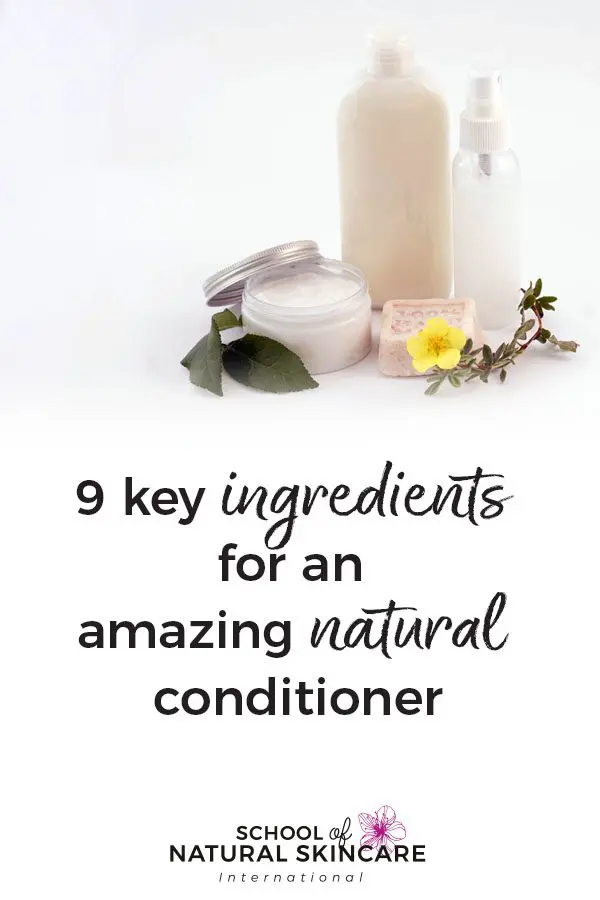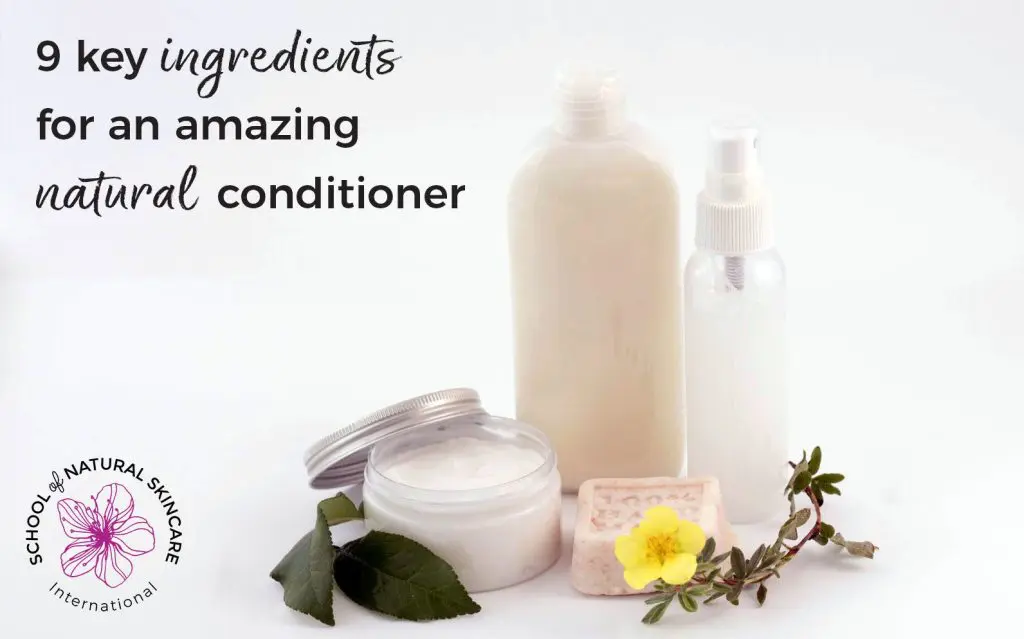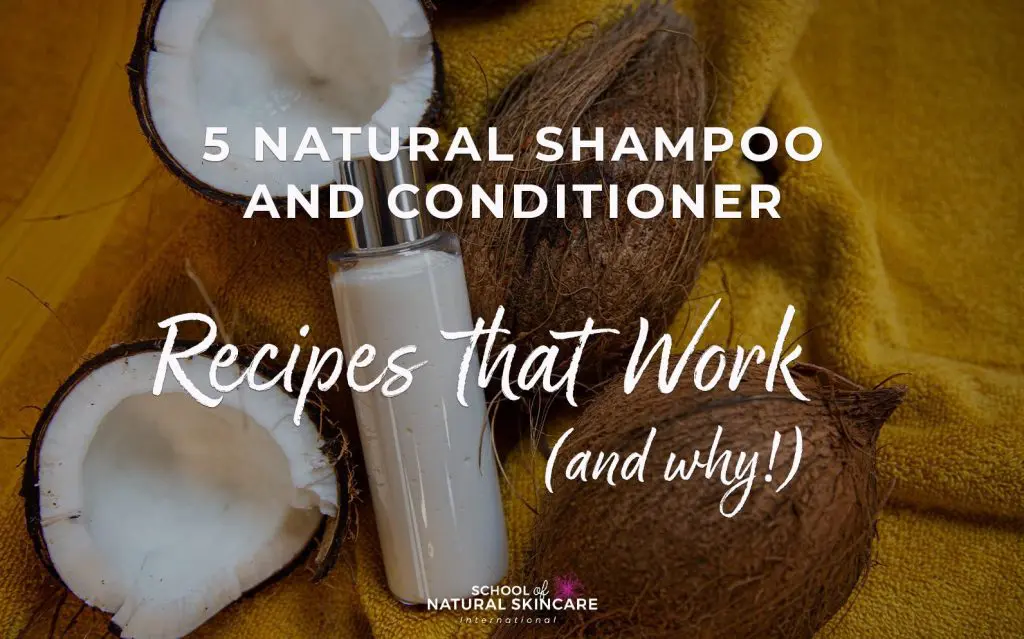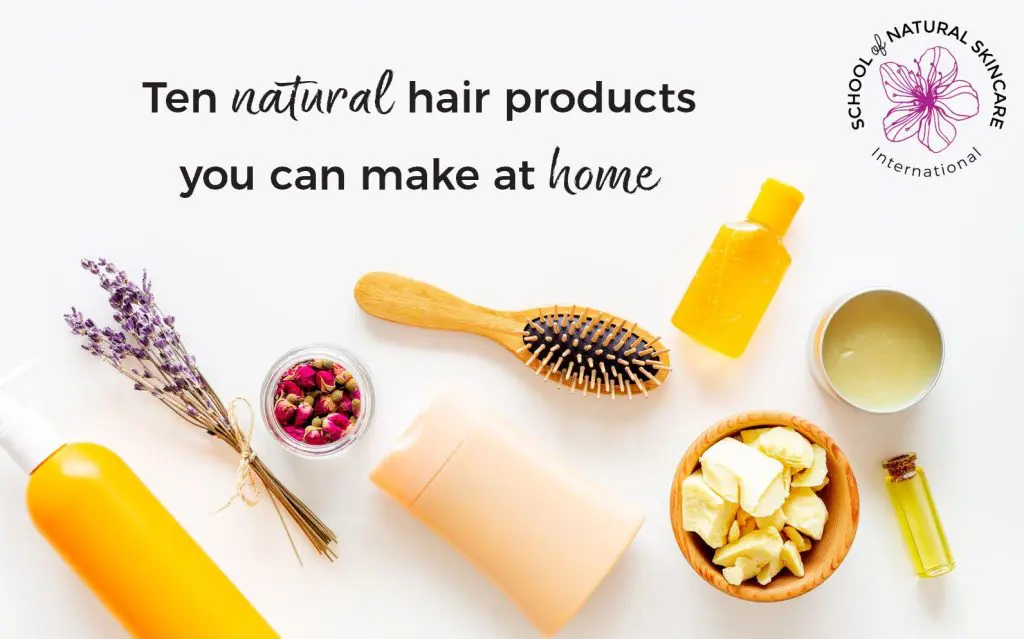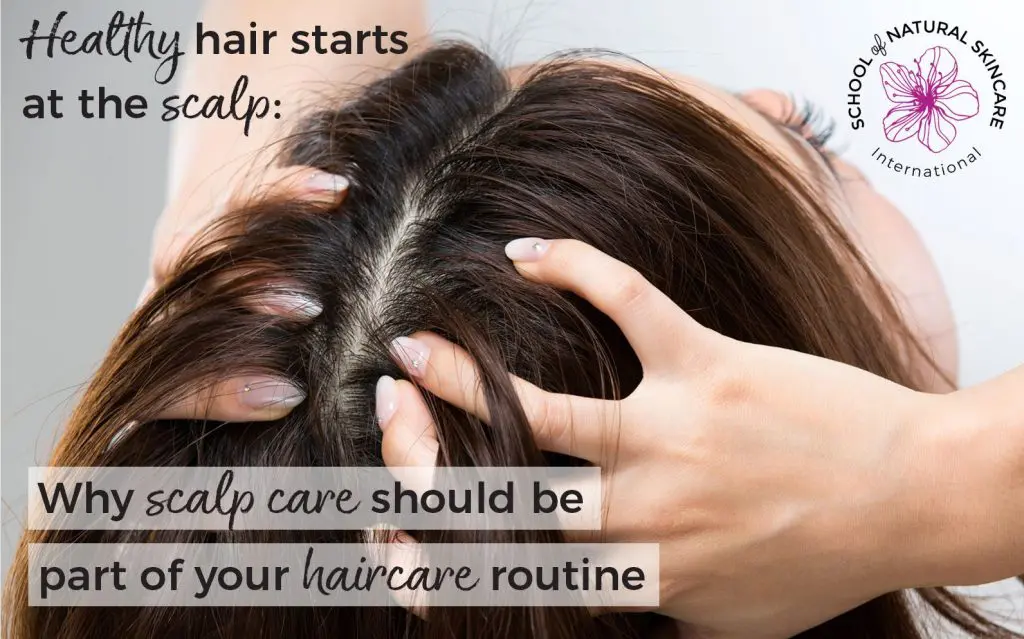Making haircare products isn’t as intimidating, or as complex, as you might think. It just requires an understanding of ingredients, formulation best practices, and how the hair and scalp function. When you break it down, and apply some hands-on training, you can combine that knowledge to make some spectacular natural and organic conditioners—ones that will leave your hair shiny, nourished, smooth, and not greasy or weighed down.
We wanted to share just a bit about the ingredients that go into making conditioners. Although this is not a recipe, or intended to be used as a formulation, it’s a quick overview to help show you that it’s really not so impossible to do it yourself, if you want to try!

Water
When people think of the word ‘solvent,’ they typically think of industrial-grade harsh chemicals used for cleaning things, but technically, anything that’s used as something that other materials or ingredients can dissolve into. Water is a solvent! And it’s the main ingredient in most conditioners because it’s such a great carrier for those water-soluble ingredients. Other water-based ingredients can be used in addition to water, such as aloe vera juice, hydrosols, or infusions, but usually, the best, highest-quality water is a great place to start.
Moisturizers or Humectants
This category of ingredients is what helps provide moisture to the hair, and they work by attracting moisture and binding it to the hair, or skin, to which they’ve come into contact. Different amounts of humectants are better suited for different types of hair. For example, people with frizzy hair need fewer humectants in their conditioners, because attracting moisture is less desired.
Emollients
These are the ingredients that lubricate and soften the hair, and replenish some of the lost lipids along the hair shaft. This makes hair shinier, and easier to comb through. Many common emollients are types of fats, oils, or butters. Again, considering what type of hair you’re formulating for will give you a good guidance as to what type of emollients to use, and how much. Fine hair can’t tolerate heavy emollients, and needs fewer and lighter ones so it doesn’t feel lank and weighed down.
Cationic Ingredients
The cationic ingredients in a conditioner are positively-charged ingredients which adsorb, rather than absorb, to the surface of the hair shaft. While you’re probably familiar with absorbing—an ingredient penetrating all the way through hair or skin—adsorbing is when an ingredient sticks to the surface of the hair. Because hair has a negatively-charged surface, it will attract these positively-charged ingredients and really make the product cling to the surface of the hair, rather than simply washing off to no effect. Cationic surfactants function as emulsifiers in conditioners—holding an emulsion of ingredients which wouldn’t naturally stay together, like oil and water. Cationic polymers in conditioners are used to provide additional conditioning.
Preservative
A product made with water, and no preservative, is a veritable bacteria buffet just waiting to happen. Extend the life of your products and make them safe to use and sell by using a proper preservative every time! There are a few excellent ones to choose from, and we go over the proper use of these essential ingredients in our Diploma in Natural Haircare Formulation.
pH Adjuster
Because typical hair responds best to products that are slightly in the acidic range, using a pH adjuster will help correct your finished product to be just right—somewhere around a 6 is about what we recommend. Some conditioner formulations already happen to end up around this region, but it’s always good to test, check, and adjust if needed.
Thickener
Another ingredient that’s sometimes not necessary, but can be nice to have, is a thickening agent. Sometimes used to help support the stability of an emulsion, and sometimes used to simply make a product feel thicker and less slippery when applied, thickeners are a great way to refine and customize your product, keeping the end user’s goals in mind.
Active Ingredients
Active ingredients for conditioners can include anything from cosmeceuticals to botanical extracts. Remember that typically, conditioner stays on the hair for a longer period of time than a shampoo, so it’s a great place to put those high-powered ingredients that really help out hair!
Fragrance
A wonderful way to set the mood when you’re using a product, customize it to fit your product range, or simply switch it up and make it all about your favorite fragrance, or fragrance blend.
As you can see, making your own conditioner does require specialized knowledge and ingredients you might not be familiar with (yet!) but it’s certainly not impossible. We’ve already helped students learn how they can formulate their own professional-quality haircare products in their own homes. In the Diploma in Natural Haircare Formulation, we take you through everything you need to know to start from scratch making amazing, invigorating shampoos, deeply nourishing conditioners, and all kinds of hair treatments and styling products.
In the course, you’ll learn:
- What makes something a professional formulation, rather than just a recipe.
- How to formulate from scratch, without wasting ingredients on trial and error.
- Key information about hair biology and hair type.
- Shampoo theory and the science of surfactants.
- Conditioner theory and why emulsification is so essential for the best products.
- Hands-on video help so you can do it at home.
And so much more! Come check it out today, and get started making your own products, just the way you want them: Natural, organic, cruelty-free, vegan… the choice is yours!
Free Training
Become a Natural Haircare Formulator
There are so many myths and mistakes online about haircare formulation—many of which can actually damage your hair.
Learn the professional way to formulate natural and organic haircare products with our free email training series.
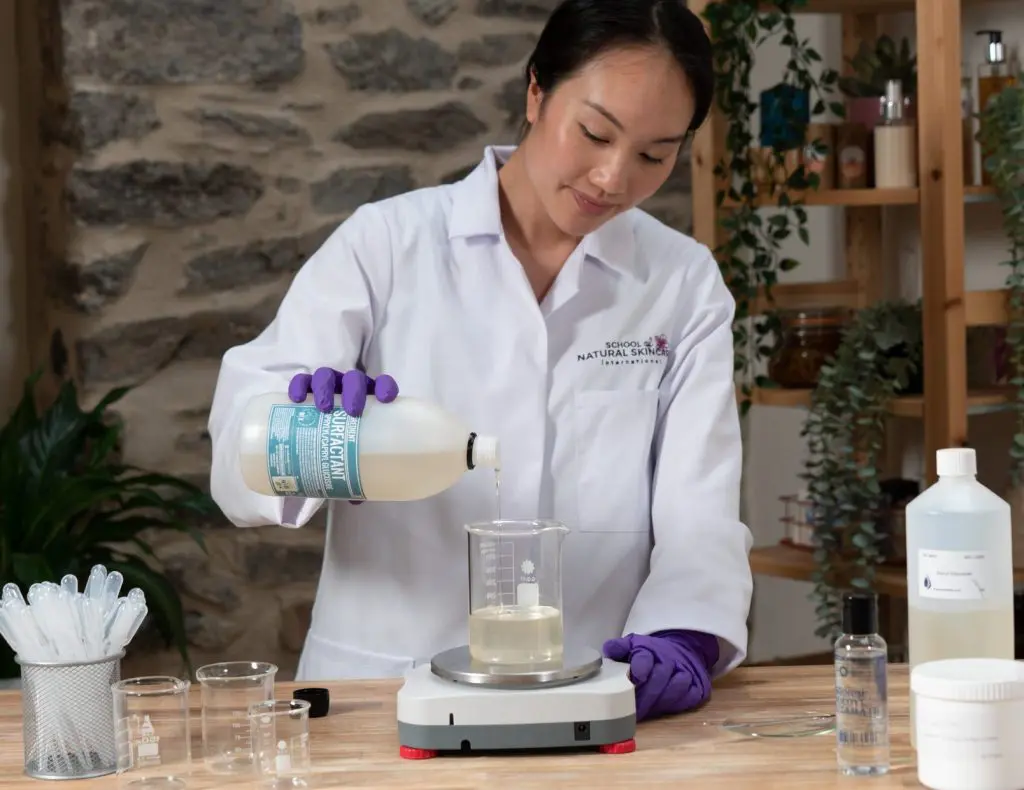
Exclusive for our newsletter subscribers. Sign up now!
We look after your data in accordance with our privacy policy.
What you’ll learn:
- The essential ingredient you must include in a shampoo.
- Five natural shampoo recipes that won’t work and why.
- How to avoid SLS – and gentle, natural alternatives.
- The difference between making haircare products and skincare products.
- How NOT to make your own shampoo and conditioner bars.
Exclusive for our newsletter subscribers. Sign up now!
Enjoyed learning about these key ingredients? Save this image below on Pinterest so you can be sure to remember!
